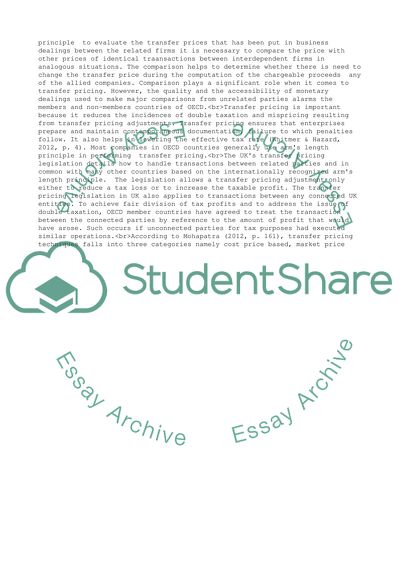Cite this document
(Identify and explain the principal techniques of transfer pricing, and Coursework, n.d.)
Identify and explain the principal techniques of transfer pricing, and Coursework. https://studentshare.org/finance-accounting/1859501-identify-and-explain-the-principal-techniques-of-transfer-pricing-and-comment-on-likely-developments-in-transfer-pricing-in-an-era-of-globalisation
Identify and explain the principal techniques of transfer pricing, and Coursework. https://studentshare.org/finance-accounting/1859501-identify-and-explain-the-principal-techniques-of-transfer-pricing-and-comment-on-likely-developments-in-transfer-pricing-in-an-era-of-globalisation
(Identify and Explain the Principal Techniques of Transfer Pricing, and Coursework)
Identify and Explain the Principal Techniques of Transfer Pricing, and Coursework. https://studentshare.org/finance-accounting/1859501-identify-and-explain-the-principal-techniques-of-transfer-pricing-and-comment-on-likely-developments-in-transfer-pricing-in-an-era-of-globalisation.
Identify and Explain the Principal Techniques of Transfer Pricing, and Coursework. https://studentshare.org/finance-accounting/1859501-identify-and-explain-the-principal-techniques-of-transfer-pricing-and-comment-on-likely-developments-in-transfer-pricing-in-an-era-of-globalisation.
“Identify and Explain the Principal Techniques of Transfer Pricing, and Coursework”. https://studentshare.org/finance-accounting/1859501-identify-and-explain-the-principal-techniques-of-transfer-pricing-and-comment-on-likely-developments-in-transfer-pricing-in-an-era-of-globalisation.


